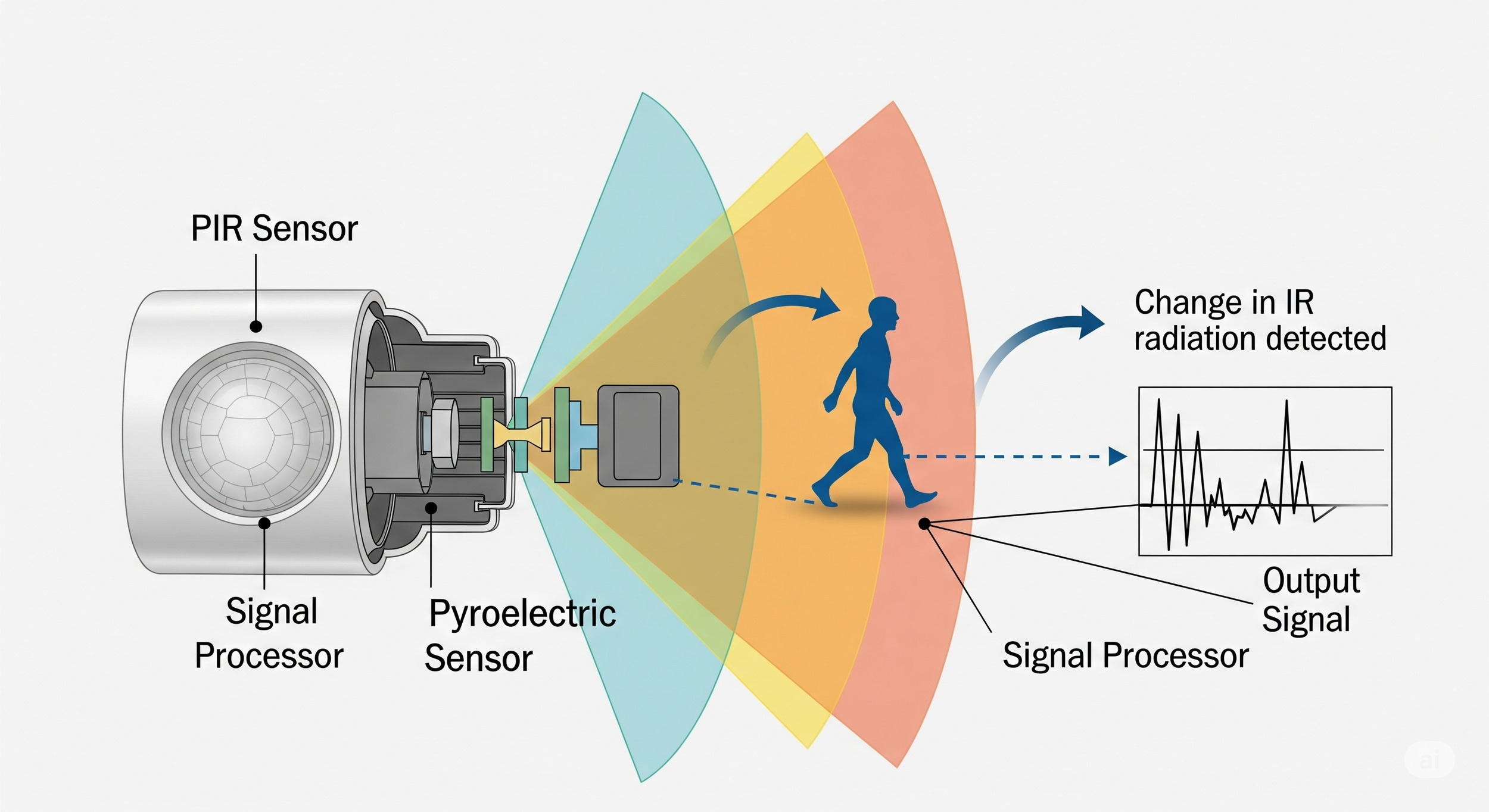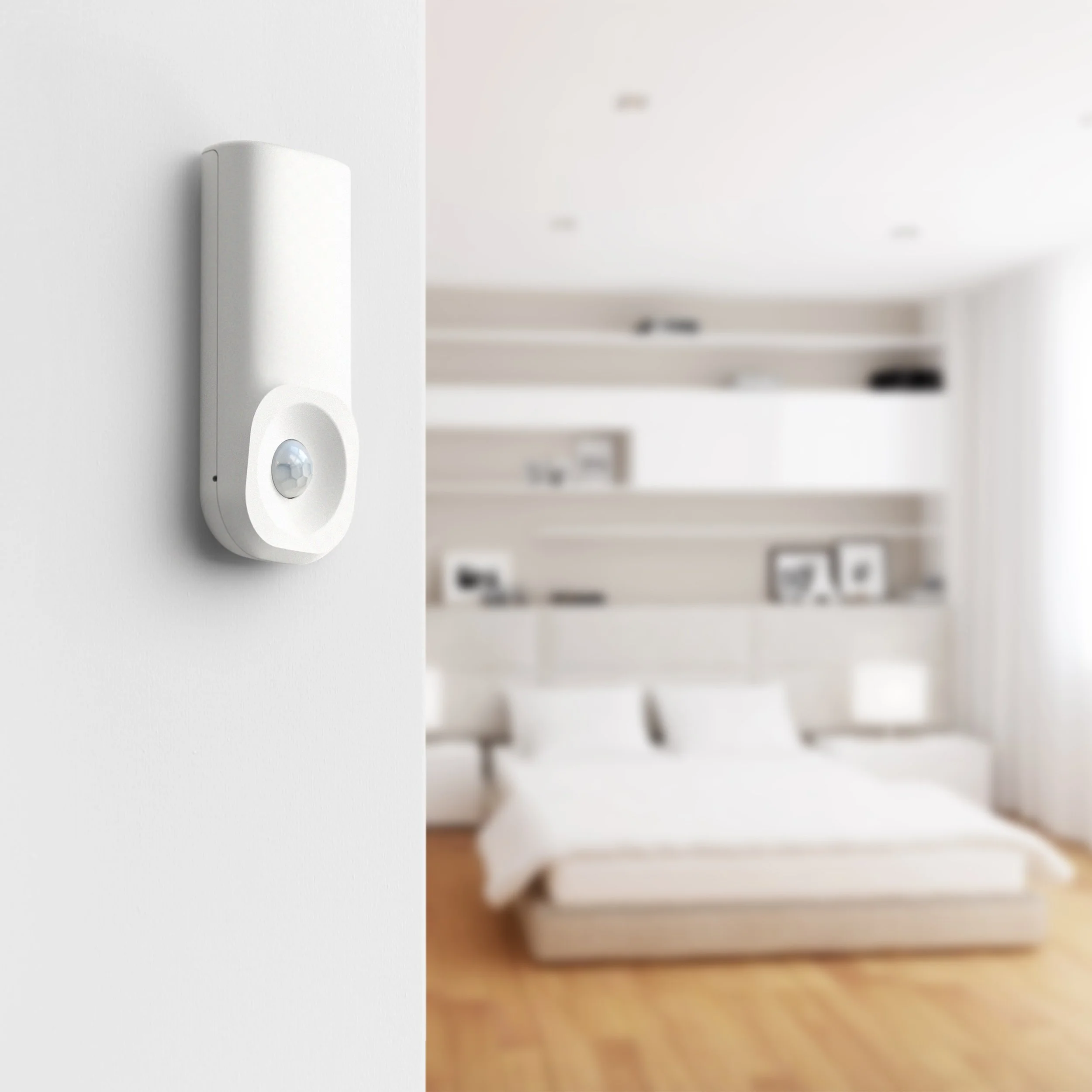Motion Sensor Showdown: PIR vs. Microwave vs. Ultrasonic - Which is Best for Your Home?
A robust home security system is built on a foundation of intelligent detection. While alarms and cameras are vital, the efficacy of the entire system often hinges on one of its most critical components: the motion sensor. However, not all motion sensors are created equal. The underlying technology dictates their performance, application, and susceptibility to false positives.
This article provides a technical analysis of the three primary motion detection technologies: Passive Infrared (PIR), Microwave, and Ultrasonic. We will examine the operational principles, advantages, and limitations of each to clarify which is best suited for residential security applications.
Passive Infrared (PIR) Technology
The most ubiquitous technology in residential security is Passive Infrared. Its prevalence is a direct result of its efficiency and reliability in typical indoor environments.
Operational Principle: A PIR sensor does not emit energy. Instead, it passively detects the infrared (heat) energy radiated by objects within its field of view. The sensor is typically paired with a Fresnel lens, which divides the field of view into distinct zones. Motion is registered when a heat source, such as a person, moves from one zone to another, causing a rapid differential change in the detected infrared energy.
Here is a visual representation of this process:
Advantages:
Low Power Consumption: Its passive nature results in exceptional battery longevity, a critical factor for wireless systems.
Cost-Effectiveness: The technology is mature and cost-effective to manufacture.
High Reliability for Human Detection: PIR sensors are excellent at detecting the specific thermal signatures of people, reducing false alarms from inanimate objects.
Pet-Friendly Optimization: Through specific lens design and sensitivity calibration, PIR sensors can be engineered to ignore the thermal signatures of small animals.
Limitations:
Line-of-Sight Requirement: The sensor must have an unobstructed view of the detection area.
Environmental Sensitivity: Abrupt changes in ambient temperature, such as those from HVAC vents or direct sunlight, can potentially trigger a false positive.
Optimal Use Case: The primary entry sensor and general home security sensor for indoor rooms, hallways, and foyers.
Microwave (MW) Technology
Microwave sensors represent an active form of motion detection, functioning on principles similar to police radar.
Operational Principle: An MW sensor emits a continuous field of low-power microwave radiation. It then analyzes the frequency of the reflected signals. When an object moves within the field, it causes a frequency shift in the reflected waves (the Doppler effect), which the sensor interprets as motion.
Advantages:
Extended Detection Range: Offers a significantly larger coverage area than PIR.
Non-Line-of-Sight Detection: Microwaves can penetrate most non-metallic materials, including drywall, allowing them to detect motion through walls.
Insensitivity to Temperature: Performance is not impacted by ambient temperature fluctuations.
Limitations:
Higher Power Consumption: Active emission requires more energy than passive detection.
Increased Cost: The technology is more complex and expensive to implement.
Higher Potential for False Alarms: Its ability to "see" through walls can lead to unwanted triggers from movement outside the intended security zone (e.g., on a street or in an adjacent apartment).
Optimal Use Case: Large, open-plan commercial spaces or specific high-security zones where its extended range is a requirement.
Ultrasonic Technology
Ultrasonic sensors also use an active detection method, but they employ sound waves instead of electromagnetic radiation.
Operational Principle: The sensor emits high-frequency sound waves, well outside the range of human hearing. It then measures the time interval and amplitude of the waves that bounce back from objects in the room. A change in the echo pattern signifies that an object has moved.
Advantages:
High Sensitivity: Can detect very slight movements within its range.
Coverage of Complex Spaces: As sound waves fill a space, they can detect motion around objects that would block a PIR sensor.
Limitations:
Short Detection Range: Generally has the shortest effective range of the three technologies.
Environmental Interference: Air currents from vents, fluttering curtains, or high-frequency noises can disrupt the sound waves and cause false alarms. Performance can also be dampened by soft, sound-absorbing materials like heavy carpets and drapes.
Optimal Use Case: Small, enclosed rooms for occupancy detection (e.g., automated lighting) or in highly controlled environments.
At a Glance: Motion Sensor Technology
The following table provides a comparative summary of these technologies to assist in strategic evaluation.
| Feature | Passive Infrared (PIR) | Microwave | Ultrasonic |
|---|---|---|---|
| Operational Principle | Detects changes in thermal energy. | Measures Doppler shift of reflected microwaves. | Measures echo timing of reflected sound waves. |
| Pros | Low power, low cost, high reliability for human targets. | Long range, penetrates non-metallic materials. | High sensitivity, can detect around obstacles. |
| Cons | Requires line-of-sight, sensitive to thermal changes. | Higher cost & power use, can be triggered externally. | Short range, sensitive to airflow and noise. |
| Primary Application | Residential & Commercial Security | High-security zones, large commercial spaces. | Small rooms, occupancy detection systems. |
| Kangaroo's Choice | Yes. The optimal technology for residential use. | No | No |
Why Kangaroo Prioritizes PIR Technology
The selection of a sensor technology is a critical design choice in developing a reliable security product. At Kangaroo, our Motion + Entry sensors are engineered exclusively with Passive Infrared (PIR) technology. This decision is based on a technical assessment of the specific requirements of a residential environment.
The primary objective for a home security sensor is to achieve the highest possible detection rate of genuine threats while maintaining the lowest possible false alarm rate.
Optimized for Residential Environments: PIR technology provides the ideal balance for homes. It reliably detects human movement without the risk of detecting motion through walls, a common issue with microwave sensors that leads to user frustration and ignored alerts. You can find more information on the causes of false alarms from industry sources like the Security Industry Association (SIA).
Engineered for Battery Longevity: The ultra-low power draw of PIR is essential for modern, wireless, DIY security systems. It ensures our sensors provide continuous protection for extended periods without requiring frequent user maintenance.
Intelligent False Alarm Mitigation: Our engineering focuses on refining the PIR system. By pairing high-quality sensors with precisely designed Fresnel lenses and intelligent firmware, we filter out common environmental noise and calibrate the system to be less reactive to pets under a certain size.
For the vast majority of home applications, PIR represents the most strategic and effective technology. It provides dependable security without the complexities and liabilities of active sensor types.
Conclusion
The effectiveness of a motion sensor is dictated by its underlying technology and its application environment. While microwave and ultrasonic sensors have their place in specialized commercial or industrial settings, Passive Infrared (PIR) technology remains the superior choice for residential security. Its inherent reliability, energy efficiency, and high signal-to-noise ratio make it the most logical foundation for a door motion sensor or general entry sensor.
For homeowners seeking a security system engineered for residential reliability, exploring Kangaroo's PIR-based solutions is a logical next step.




![[QUIZ] What's Your Home's True Security Vulnerability Score?](https://images.squarespace-cdn.com/content/v1/6047adb1f3383c71b64f494b/7b99bd74-f07d-42ae-a096-72ee222bde79/IMG_4306.jpg)

















Think more cameras mean more safety? Discover 3 ways an over-secured home can attract burglars and learn why smart, discreet security is the better choice.